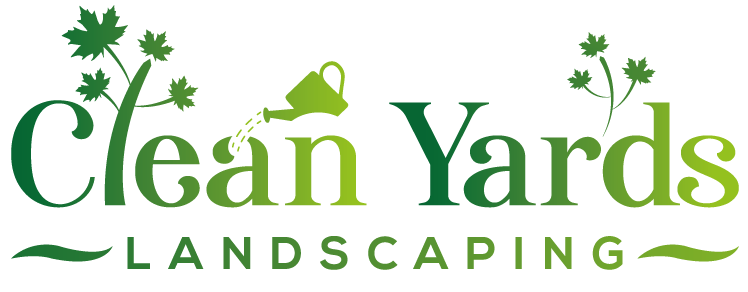Embrun Veggie Garden Prep: Beat Clay Soil This Spring
Ready to turn that patch of stubborn Embrun clay into a thriving vegetable garden this spring? Dealing with heavy soil can be frustrating, but with the right prep, you can achieve fantastic results. If you need a hand getting started, request a free estimate for our garden preparation services today!
Quick Guide to Beating Clay Soil:
- Clay soil holds nutrients well but suffers from poor drainage and compaction.
- Amend heavy clay by mixing in generous amounts of organic matter like compost (avoid adding sand).
- Work clay soil only when moist, not wet or bone-dry, ideally in spring or fall.
- Consider alternatives like raised beds or container gardening to bypass clay issues entirely.
- Choose vegetable varieties known to tolerate heavier soils (e.g., leafy greens, beans, brassicas).
- Mulching helps retain moisture and improves soil over time.
Introduction: Dreaming of Veggies but Dreading the Dig in Embrun?
Ah, Embrun! Picture this: stepping into your backyard to harvest crisp lettuce, sun-warmed tomatoes, and maybe some snappy green beans for dinner. That vegetable garden dream is fantastic, right? But then... reality bites. You grab your trusty shovel, aim for that sunny patch, and *clank*. You've just met the notorious Ottawa Valley clay!
Folks across the region, from Embrun and Russell to neighbouring areas like Metcalfe, know this struggle. It can feel less like joyful gardening and more like an archaeological dig through cement, especially when it's wet and sticky or baked hard by the sun. Are you dreaming of those fresh veggies but absolutely dreading the dig? The thought of battling that heavy soil can make even the most enthusiastic gardener want to trade their trowel for a comfy chair.
Don't despair or call in heavy machinery just yet! That heavy clay soil is a challenge, but not a dealbreaker for your gardening ambitions. We understand the frustration, and more importantly, we know the solutions. This section is all about smart landscaping strategies and simple soil amendment techniques to improve drainage and texture, turning that tricky clay into fertile ground for your dream garden. Let's get growing, the easier way!
The Lowdown on Clay: Understanding Your Embrun Soil
Okay, let's dig into the dirt on Embrun's soil – quite literally! If you've ever felt like your gardening efforts require a pickaxe rather than a trowel, you're likely dealing with our famous (or infamous?) clay soil. It’s pretty much the standard stuff across much of the Ottawa region, from here in Embrun and Russell right over to Greely and beyond. Think of clay soil as being made up of super-duper tiny particles, all jammed together like commuters on a rush-hour bus.
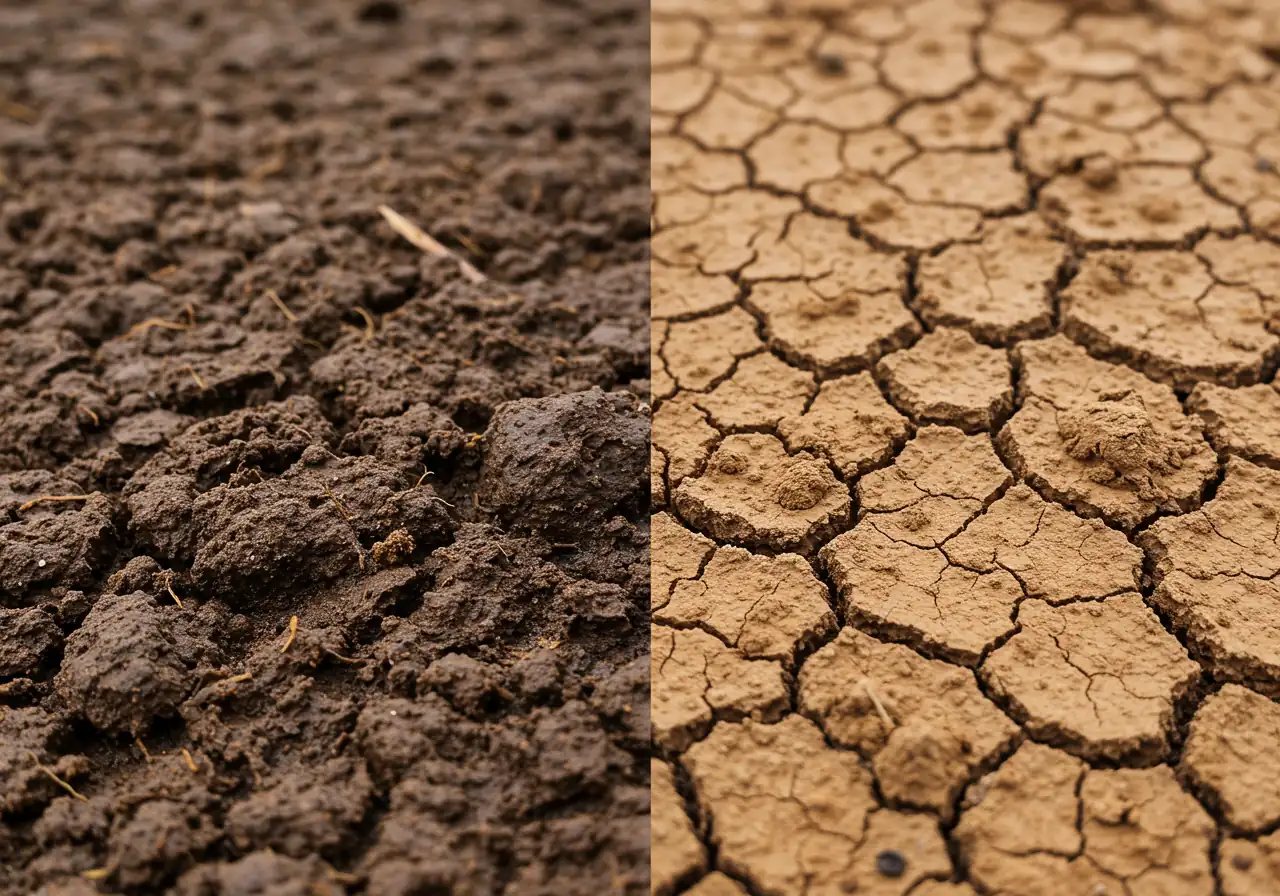
Now, clay isn't all bad news. It has a secret superpower: holding onto nutrients like a champion! Those tiny particles have lots of surface area to grab onto the good stuff plants need to grow. It's naturally quite fertile, which is a definite plus.
But (and it's a big but, isn't it?), that tightly packed structure causes some major landscaping headaches. The biggest challenge? Drainage. Water has a tough time moving through those tiny spaces, leading to soggy lawns and waterlogged plant roots, especially during Ottawa’s wet springs or after heavy summer rain. This lack of drainage also contributes to compaction. When the soil gets walked on or equipment rolls over it (especially when wet), those particles squish even closer, squeezing out vital air pockets that roots need. Improving this is critical, which is why understanding the importance of lawn aeration for soil health is key for clay-bound yards. You can also explore resources like the Ontario Ministry of Agriculture, Food and Rural Affairs (OMAFRA) guide on soil texture for more technical details.
And let's talk texture. When wet, Embrun clay can be incredibly sticky and heavy – "gumbo," anyone? When it dries out in the summer sun, it can turn rock-hard and crack, making digging feel impossible. Lawns often struggle on heavy clay, thinning out or developing bare patches where water pools or the ground is too hard; sometimes, giving your lawn a boost through Embrun overseeding for a thicker lawn can help combat these issues.
Understanding your clay soil is the first step towards working with it, not against it. Knowing its tendency to get waterlogged helps plan for rainy seasons – maybe even considering some Embrun outdoor lighting for fall safety and curb appeal to navigate potentially slick pathways. Keeping notes on what thrives and struggles can also be incredibly useful; maintaining an Embrun garden log for fall planting success helps track how different plants (and soil amendments!) perform year after year. While it presents challenges, knowing the lowdown on your clay means you can start taking steps (like soil amendment, which we'll cover next!) to improve it, or explore our professional landscaping services for expert help.
Timing is Key: When to Tackle Your Clay Garden Bed
Okay, let's talk timing. When it comes to tackling that clay garden bed, trying to work it at the wrong moment is like trying to reason with a toddler during a tantrum – messy and utterly unproductive! Work clay soil when it's too wet, and you'll have a sticky, compacted mess that suffocates plant roots. Try digging when it's bone dry after a summer scorcher, and you might as well be trying to chisel granite. Timing, my friends, is everything in the world of landscaping with clay.
So, when is the magical moment? Generally, the best times to amend or dig into your clay soil in the Ottawa region, whether you're in Embrun or over in Nepean, are spring and fall.
- Spring: Aim for that sweet spot after the ground has thawed completely but before the soil gets either too soggy from persistent spring rains or baked hard by early summer heat. You want it moist, but not dripping. Our last frost date in the Ottawa area typically falls around mid-to-late May according to resources like the Old Farmer's Almanac, so target your heavy digging and soil amendment efforts before then if possible, or just after the major melt.
- Fall: This is often considered the ideal time. After the summer growing season winds down, but before the ground freezes solid (usually mid-September to early October for the first frost), the soil moisture is often just right. Amending in the fall gives the organic matter you add all winter to start breaking down and improving the soil structure for spring planting. This is also a great time for a general tidy-up; consider an expert spring or fall garden bed preparation to get things ready.
The Handy-Dandy Squeeze Test:
How do you know if the moisture level is "just right"? Grab a handful of soil and give it a firm squeeze.
- If water drips out, or it forms a sticky, dense ball that holds its shape rigidly – Too Wet! Step away from the shovel and let it dry out more. Working it now will cause compaction.
- If it barely holds together and crumbles instantly – Too Dry! You'll need some rain or watering before you can dig effectively without breaking your back (or your tools!).
- If it forms a loose clump that easily breaks apart when you poke it – Just Right! Goldilocks would approve. Time to get digging!
Remember, these windows can be narrow, especially with Ottawa's unpredictable weather! If the timing feels tricky or the job seems too big, remember that professional landscaping and garden services are available to help tackle the heavy lifting. Getting the timing right is crucial whether you're doing a full overhaul or just a seasonal tidy-up, and our comprehensive Ottawa yard cleanup service covers all the bases. Need inspiration for what's possible? You can see examples of transformed gardens in our gallery. And rest assured, our expertise isn't limited to just one area; our property cleanup services extend to areas like Marionville and beyond. Patience and paying attention to the soil's condition are your best allies!
The Great Soil Transformation: Amending Clay Step-by-Step
Okay team, let's roll up our sleeves (figuratively, or literally if you're heading outside right now!). We know clay soil can be a bit of a diva – demanding, heavy, and sometimes downright difficult. But fear not! With the right approach and a little elbow grease, we can transform that stubborn patch into a gardener's paradise. This is your step-by-step guide to the Great Soil Transformation. Think of it as a spa day for your dirt!
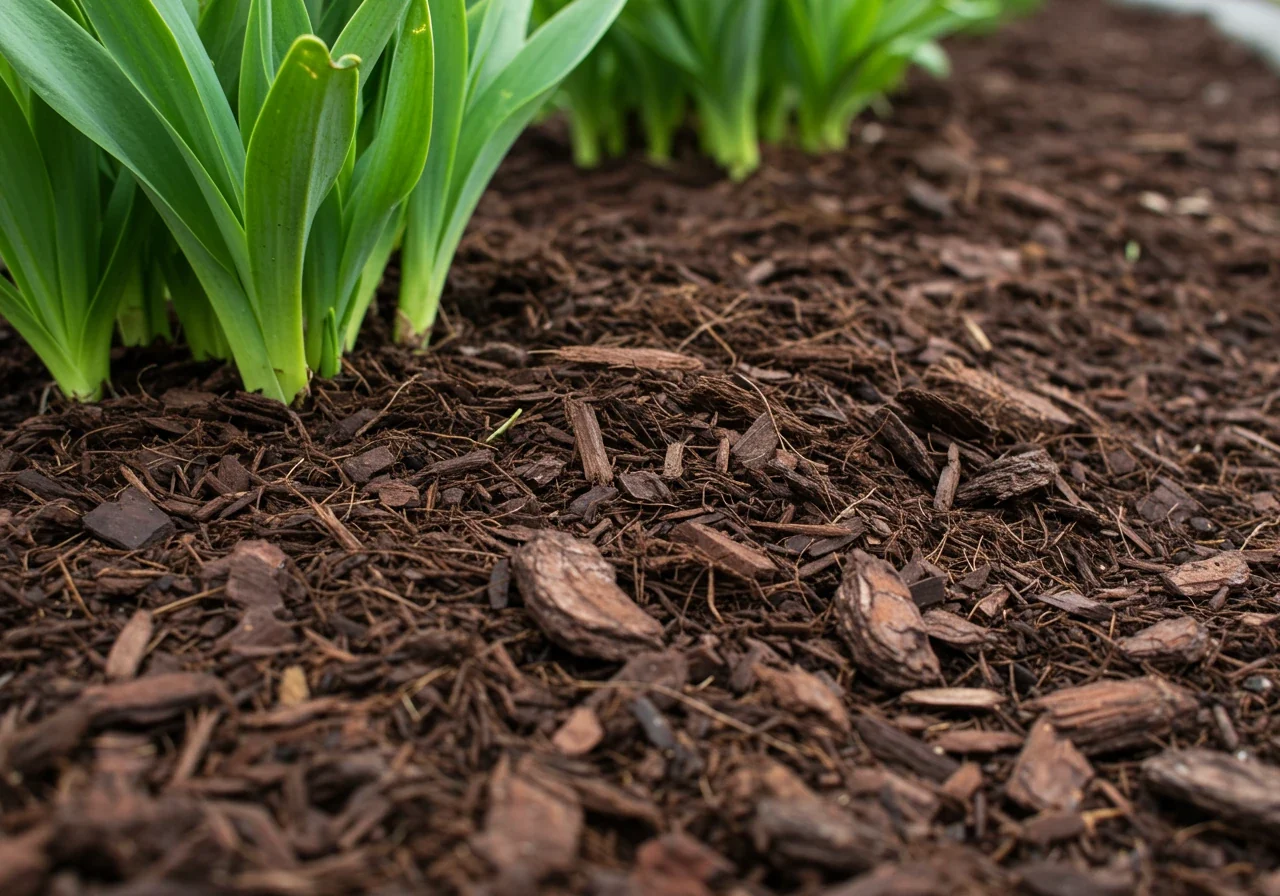
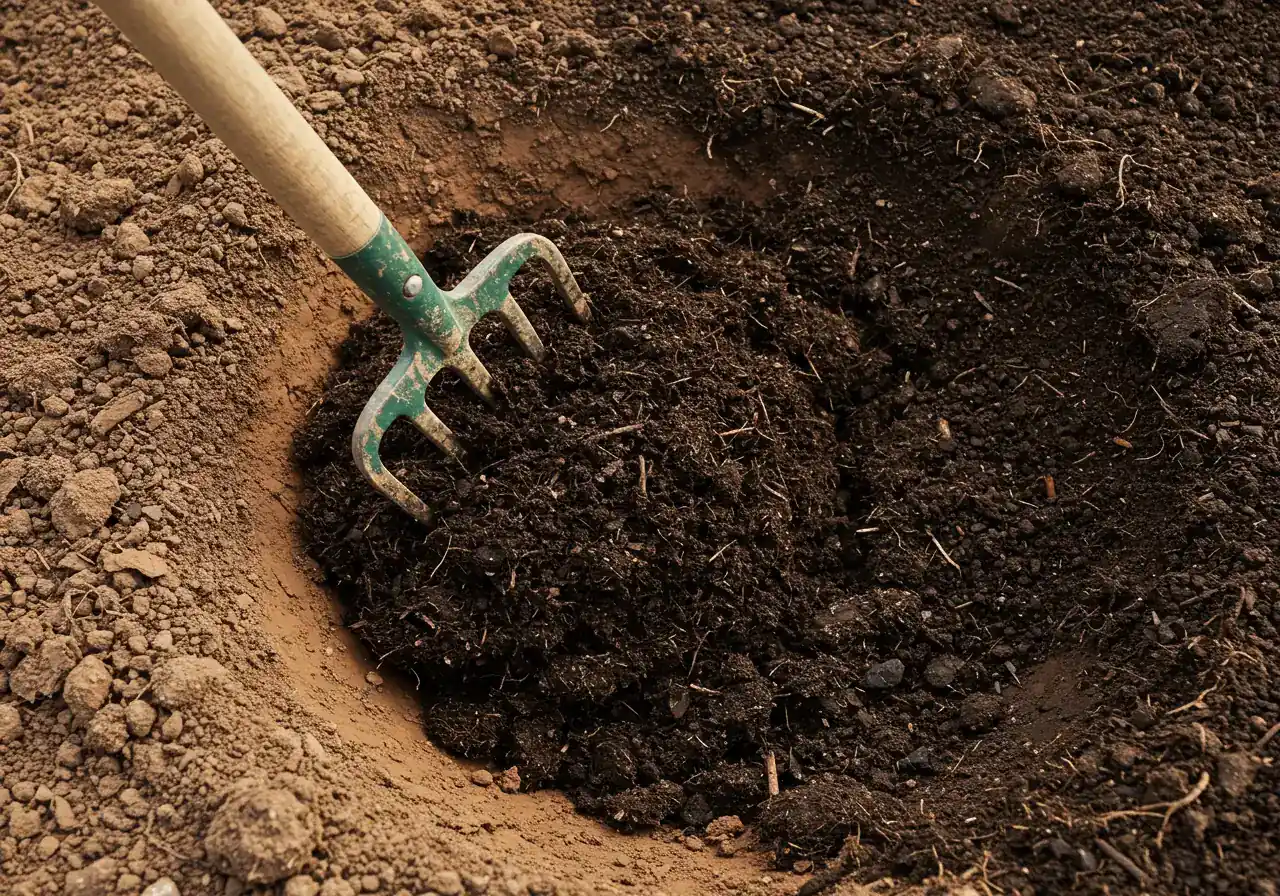
Step 1: Choose Your Soil Superfood (Organic Matter)
This is the absolute key ingredient. Organic matter is like the magic wand for clay soil. It works wonders by:
- Forcing those tiny clay particles apart, creating space for air and water (hooray, drainage!).
- Improving soil structure, making it lighter and easier to work.
- Feeding beneficial soil microbes, which are essential for healthy plant growth.
- Adding nutrients slowly over time.
So, what kind of "superfood" are we talking about? You have options!
- Compost: The undisputed champion! Well-rotted compost, whether homemade or purchased, is black gold for clay. Find local suppliers like Greely Sand & Gravel for bulk options.
- Aged Manure: Cow, horse, or poultry manure that has been composted for at least six months (fresh manure can burn plants).
- Leaf Mold: Decomposed leaves – fantastic soil conditioner. Collect leaves in the fall and let them break down.
- Shredded Leaves/Straw: Incorporate directly, though they take longer to break down than compost.
- Peat Moss/Coconut Coir: Improve water retention and aeration, but use peat moss sparingly due to environmental concerns.
Choosing the right amendments is crucial. For guidance on sourcing quality compost or other materials, exploring options for thoughtful material selection for your landscaping project can be very helpful. Aim for well-rotted, dark, crumbly materials.
Step 2: Prepare the Battlefield (Clear the Bed)
Before you start adding the good stuff, you need a clean slate. Remove any existing weeds, grass, large rocks, or debris from the area you plan to amend. This ensures the organic matter gets mixed directly with the clay soil where it’s needed most. If the area is significantly overgrown or you're starting fresh, sometimes a thorough clearing is the first major hurdle. For larger areas or tougher jobs getting professional help with the initial stages, like a dedicated Marionville garden clean up service or even broader assistance like our Marionville property cleanup service which covers more ground, can save you time and effort. We also offer services in nearby areas like Metcalfe garden clean up.
Step 3: Spread the Love (Apply the Organic Matter)
Don't be shy here! Spread a generous layer of your chosen organic matter over the entire surface of the soil. How much? Aim for at least 3-4 inches, and up to 6 inches is even better, especially for very heavy clay like we often see around Ottawa, from Manotick right up to Barrhaven. You want a noticeably thick blanket covering the clay.
Step 4: Mix It, Don't Pulverize It (Incorporate Gently)
Now comes the mixing. The goal is to incorporate the organic matter into the top 6-8 inches of the clay soil. Crucially, avoid over-working or pulverizing the soil, especially with a rototiller, as this can actually destroy the soil structure you're trying to build.
- Use a sturdy garden fork or spade.
- Gently turn the organic matter into the clay, lifting and folding rather than aggressive churning. Think folding ingredients into cake batter, not using a power drill!
- Work systematically across the bed.
- Remember the "Squeeze Test" from our previous section – only do this when the soil moisture is just right (moist but not soggy).
Step 5: Finishing Touches and Future Care
Once incorporated, rake the bed level. If possible (especially if amending in the fall), let the bed rest for a week or two before planting to allow the soil ecosystem to start settling.
- Eco-Tip: Start composting! Kitchen scraps (vegetable peels, coffee grounds) and yard waste (grass clippings, leaves) make fantastic free organic matter. It reduces landfill waste and feeds your garden. Win-win! Check out the City of Ottawa's composting resources.
- Consider Cover Crops: Planting things like clover or rye in the off-season protects the soil from erosion and adds organic matter when turned under in spring.
- Soil Test: Unsure about nutrient levels or pH? A simple soil test kit can provide valuable info before you add fertilizers.
- Mulch Magic: After planting, apply a layer of organic mulch (like shredded bark or wood chips). This helps retain moisture, suppress weeds, and continues to slowly improve the soil as it breaks down. Consider adding definition with professional mulching and edging services to really make your transformed bed pop.
Amending clay soil isn't a one-time fix; it's an ongoing process. Adding compost or other organic matter annually will continue to improve its structure and fertility. It takes time, but the results – easier digging, better drainage, and happier plants – are absolutely worth it! If the task seems daunting, remember expert help is available. You can always book an estimate for landscaping services online to discuss your soil transformation project. Happy amending!
Beyond Digging: Smart Alternatives for Clay Challenges
Okay, so you've stared down the beast that is Ottawa clay, maybe even attempted the Great Soil Transformation we talked about, but perhaps you're thinking, "Isn't there an easier way?" Maybe your back is already twinging just *thinking* about digging, or maybe you're short on time. Good news! There are brilliant ways to create amazing garden spaces without needing to wrestle that heavy soil into submission. Let's explore some smart alternatives that go *beyond* digging.
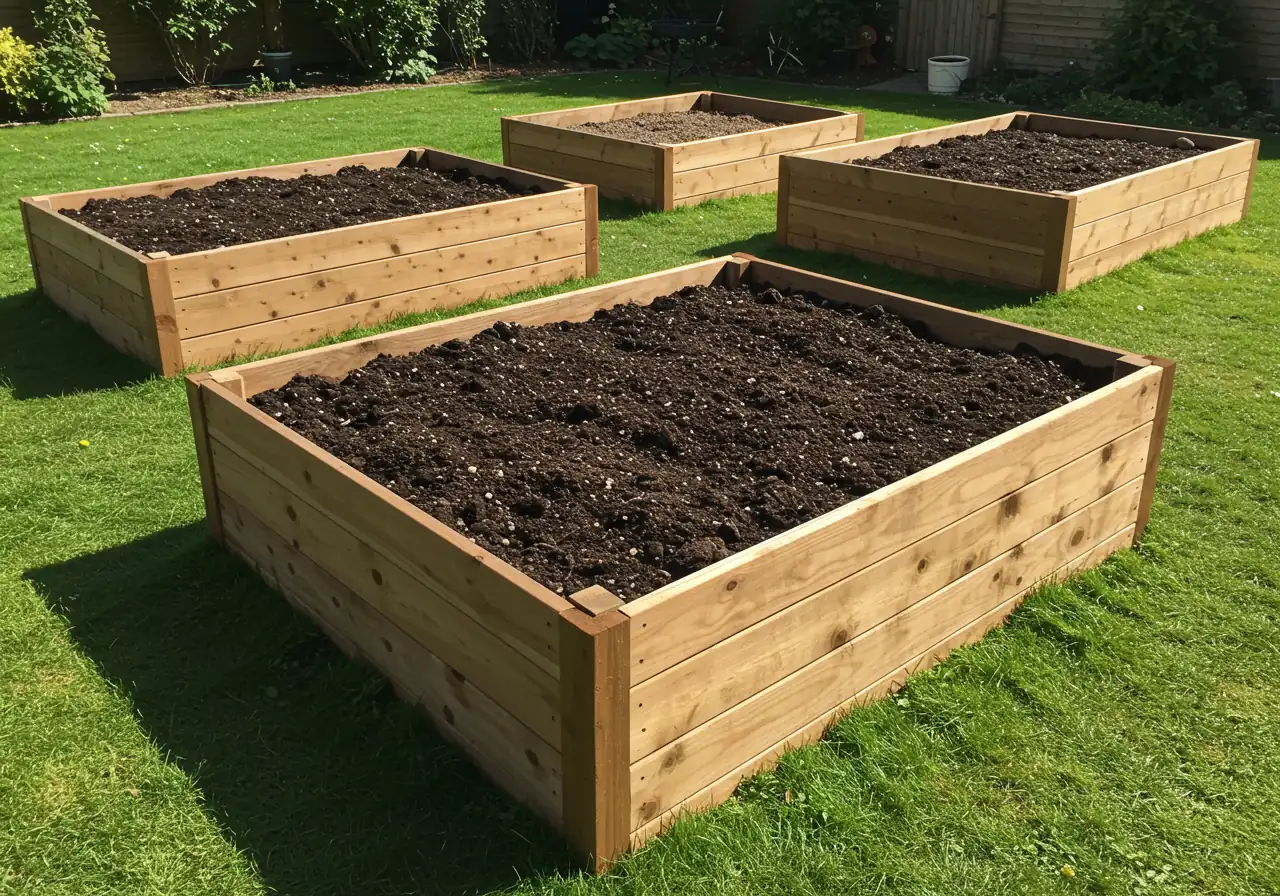
1. Reach for the Sky with Raised Beds
Think of raised beds as the VIP section for your plants. These are essentially boxes or contained areas built *on top* of your existing ground and filled with lovely, loamy soil mix.
- Pros: Fantastic drainage (water flows out easily!), you control the soil quality completely (bye-bye, clay!), easier on your back and knees (less bending!), and they warm up faster in spring. Perfect for vegetable gardening or flower displays. You can find materials like lumber or kits at local garden centres around Ottawa. Before setting up raised beds, you might need to clear the space – a task sometimes needing a professional touch, like our comprehensive Ottawa property cleanup service. Once built, defining the edges makes them look sharp; consider professional mulching and edging services around the bases. We also offer custom garden bed installations.
- Cons: Initial cost and effort to build or buy the beds and fill them with soil. They can sometimes dry out quicker than in-ground beds, requiring more attention to watering, especially during hot Barrhaven summers.
2. Layer Up with Lasagna Gardening (No-Dig Method)
Sounds delicious, right? This method skips the digging entirely! You build your garden bed upwards in layers, like making lasagna. Start with a base layer of cardboard or newspaper right on top of the grass or weeds (this smothers them). Then, alternate layers of "green" materials (nitrogen-rich, like kitchen scraps, grass clippings) and "brown" materials (carbon-rich, like shredded leaves, straw, more cardboard).
- Pros: Builds incredibly rich soil over time as the layers decompose. Supresses weeds effectively. It's super eco-friendly, using yard waste and kitchen scraps. Minimal physical effort! This eco-friendly method cleverly uses layers of 'browns' (like cardboard or dried leaves – perhaps gathered during a thorough Metcalfe garden clean up service) and 'greens'.
- Cons: It takes time for the layers to break down into usable soil (best started in the fall for spring planting). The initial layers might not look super tidy. You might need to top it up with compost for the first planting season.
3. Pot Power: Container Gardening
Don't underestimate the power of pots! Container gardening involves growing plants in pots, tubs, window boxes, hanging baskets, or grow bags.
- Pros: Ultimate flexibility – move your garden with the sun or bring sensitive plants indoors! Perfect for patios, balconies, or small spaces. You have complete control over the soil mix and drainage. Great for managing pests and diseases.
- Cons: Containers need more frequent watering (sometimes daily in summer heat). Plant size can be limited by pot size. Good quality pots and potting mix can be an investment. We'd love to hear which method works best for your Barrhaven backyard! Let us know your experience with container gardening or other alternatives – your insights are valuable. Share your gardening feedback with us!
Raised Beds
Effort: Moderate initial setup (building/filling), easier ongoing maintenance.
Cost: Medium to High (lumber/kits, lots of soil).
Space: Needs dedicated ground space.
Soil Quality: Instant control, excellent drainage.
Best For: Veggies (especially root crops), flowers, gardeners wanting less bending, defined garden areas.
Lasagna Gardening (No-Dig)
Effort: Low physical effort (layering), requires patience for decomposition.
Cost: Very Low (uses recycled materials).
Space: Can be done anywhere on ground (lawn, existing beds).
Soil Quality: Builds rich soil over time.
Best For: Eco-conscious gardeners, reducing yard waste, patient gardeners, improving soil in place.
Container Gardening
Effort: Easy setup, higher ongoing watering effort.
Cost: Variable (pots can be cheap or expensive, potting mix needed).
Space: Highly flexible (patios, balconies, small yards).
Soil Quality: Complete control with potting mix.
Best For: Renters, small spaces, mobility, growing specific plants, pest control.
Ultimately, these smart landscaping alternatives mean less back-breaking work and more gardening joy, even on the heaviest Ottawa clay. Your body will definitely appreciate the break – a big thank you from your future self! So, ditch the dread and get creative with these beyond-digging solutions! Check out some amazing garden transformations for inspiration.
Plant Smart: Veggies That Don't Mind Getting Their Roots Dirty
Okay, so you've put in the effort – maybe you wrestled with that clay using the soil amendment techniques we discussed, or perhaps you cleverly sidestepped the issue with raised beds or container gardening. High five! But even improved soil can have its quirks, and let's be honest, some veggies are just tougher cookies than others. Choosing plants that are more tolerant of less-than-perfect conditions is a smart move for stress-free gardening.
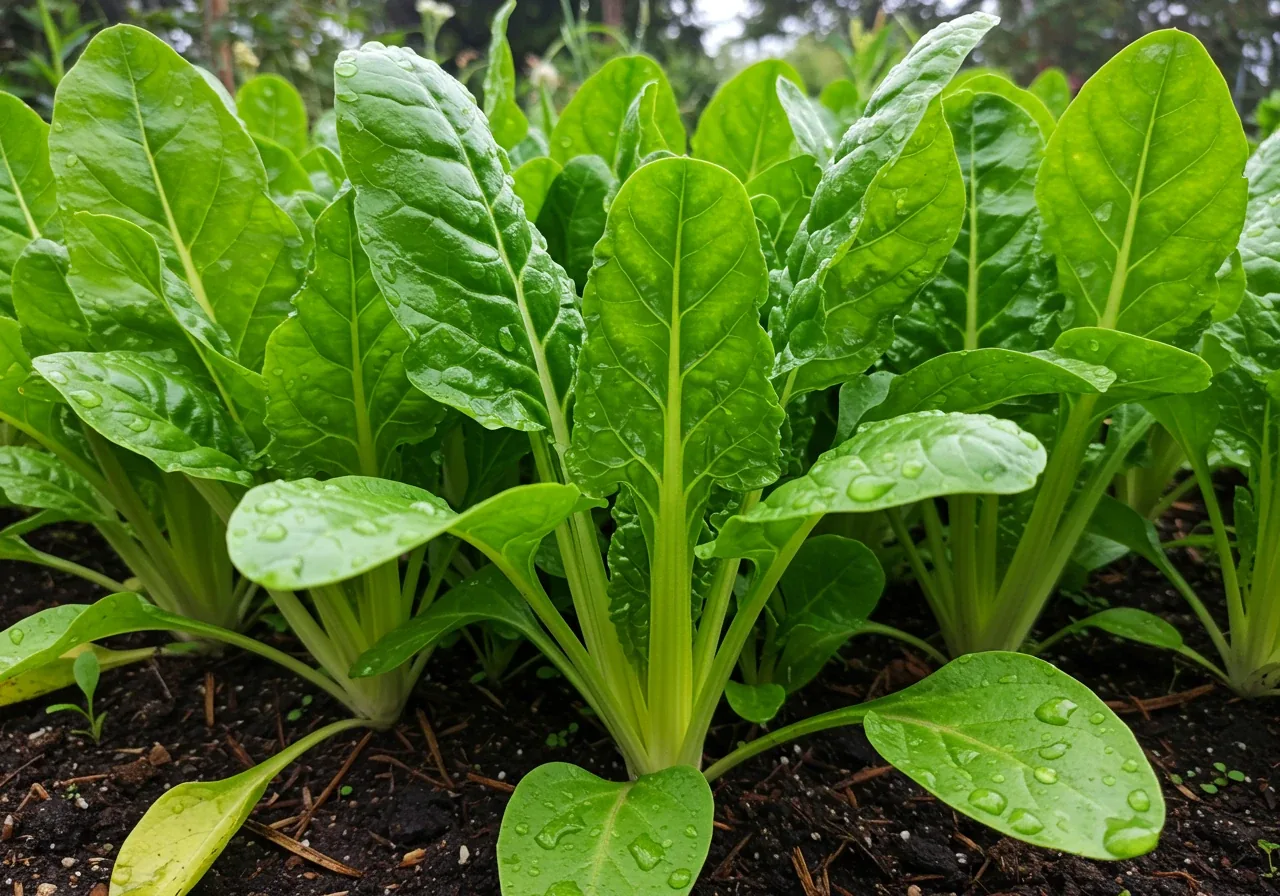
Here’s the dirt on who might thrive and who might throw a tantrum in your amended Ottawa soil:
Veggies Likely to Be Your Friends:
These plants tend to be less fussy about perfect drainage and can often handle slightly heavier soil:
- Leafy Greens: Think kale, Swiss chard, spinach, and most lettuces. They focus on leaf production, not deep roots.
- Beans: Both bush beans and pole beans are usually reliable performers.
- Cabbage Family (Brassicas): Broccoli, cabbage, Brussels sprouts, and kohlrabi often do well once established.
- Peas: Give them something to climb, and they're generally happy campers.
- Squash & Zucchini: These vigorous growers can often power through less-than-ideal soil, provided they have sun and nutrients. Preparing the garden area properly, much like preparing ground for new sod installation, really helps them get established.
Veggies That Might Need Extra Pampering (or a Raised Bed):
These plants really appreciate loose, well-drained soil and might struggle in compacted or consistently damp clay, even if amended:
- Root Vegetables: Carrots need loose soil to grow straight (otherwise, prepare for some abstract art!). Potatoes can rot if drainage is poor. Radishes and beets also prefer lighter soil.
- Onions & Garlic: These bulbs need good drainage to prevent rotting.
- Melons: They love heat and hate having "wet feet."
Ottawa & Neighbourhood Considerations:
Remember our climate! Whether you're gardening in Manotick or Barrhaven, our growing season isn't the longest. Look for varieties described as "early maturing" or specifically suited for northern climates. Your soil preparation method also plays a role. If you created deep, beautifully amended beds or used raised beds, you'll have better luck with the fussier crops. If you only lightly amended, stick with the more tolerant options first. If you want a dedicated space perfectly prepped for pickier plants, consider our professional garden bed installation services.
Starting small and observing what works best in your specific patch is always wise. Have more questions about tackling your specific clay patch or choosing plants? Feel free to reach out and contact us. We always appreciate hearing about local successes – what grows like gangbusters in your yard? Share your veggie success stories via our estimate feedback form! And for our ongoing clients tracking their landscaping projects, remember you can always check progress or ask questions via the Clean Yards customer portal. Plant smart, choose wisely, and get ready for some delicious rewards! You can check out our Google reviews to see what other clients say.
Potential Soil Improvement with Amendments (Illustrative)
Clay Soil Quick Wins
Dealing with tough Ottawa clay, say over in Barrhaven? Don't sweat it! Your gardening quick wins:
- Add Compost: Mix in lots! It's the #1 fix for heavy soil drainage and creating better landscaping conditions.
- Right Time to Dig: Avoid working super wet or baked clay. Good timing prevents compaction, vital before any major property clean up.
- Build Up: Raised beds offer perfect soil instantly, bypassing clay woes. Ask about our garden installation services.
- Smart Planting: Choose clay-friendly plants! Learn about our team's approach to local soil. Ensure you understand project specifics, just like reviewing our general terms and conditions, for the best outcome. Also review our privacy policy.
Spring Garden Prep Timeline
Late Winter / Early Spring
Plan your garden layout. Order seeds/supplies. Check tools. Assess soil condition once thaw begins.
Mid-Spring (Soil Workable)
Perform the 'Squeeze Test'. If soil is ready, clear beds and begin soil amendment process. Add compost!
Late Spring (After Frost Risk)
Plant hardier seedlings and direct-sow cool-weather crops. Continue amending if needed.
Early Summer
Plant warm-weather vegetables (tomatoes, peppers). Apply mulch. Begin regular garden maintenance (watering, weeding).
FAQ: Your Embrun & Ottawa Clay Gardening Questions Answered
Hands down, well-rotted compost is the MVP for improving clay soil structure and fertility. Aged manure (cow, horse, poultry – aged at least 6 months!) and leaf mold are also fantastic choices. These goodies help separate those sticky clay particles, improving drainage and making the soil easier to work for your gardening efforts. Consistent addition is key, forming the foundation of good soil preparation techniques.
Oh boy, this is a common myth! Please *don't* add sand to heavy clay soil. Instead of creating lovely loam, you often end up making something closer to concrete or brick! The fine clay particles just fill the spaces between the larger sand particles, making it even denser. Stick with adding plenty of organic matter like compost – that's the real secret sauce for improving drainage and soil texture in Ottawa clay.
Improving clay soil isn't usually a one-and-done deal, unfortunately! Think of it as an ongoing relationship. Adding a good layer of compost or other organic matter annually, typically in the spring or fall, is ideal. You can gently work it into the top few inches or just apply it as a top dressing. This continuous soil improvement is a core part of effective garden maintenance strategies.
Absolutely! While some delicate flowers might fuss, many beauties thrive in amended clay. Coneflowers (Echinacea), Daylilies, Hostas, Peonies, and Black-Eyed Susans are often quite tolerant once established. Amending the planting hole generously with compost helps give them a great start. For fussier flowers, consider raised beds or container gardening as easy alternatives around your Embrun or Barrhaven home. Proper bed prep, sometimes involving a good clear-out like our Metcalfe yard cleanup service, makes a big difference. We also provide garden clean up in Ottawa.
Because clay holds moisture, plants in our Ottawa gardens can be more susceptible to fungal diseases caused by poor drainage and reduced air circulation. Watch out for things like powdery mildew (white coating on leaves), root rot (mushy, brown roots), and fungal leaf spots. Giving plants enough space, watering at the base (not the leaves), and ensuring good fall cleanup helps prevent issues. Removing diseased plant debris promptly, like during a thorough Marionville yard cleanup service, is crucial.
Yes, please mulch! Applying a 2-3 inch layer of organic mulch (like shredded bark or wood chips) over your clay soil beds is super beneficial. It helps retain moisture, preventing the soil from drying out and cracking like concrete in the summer sun. Mulch also suppresses weeds and slowly breaks down, adding valuable organic matter over time – another win for your landscaping efforts and overall effective soil preparation.
Conclusion: Get Ready for Your Best Embrun Veggie Haul Yet!
Alright, garden warriors of Embrun and beyond, let's wrap this up! We've dug deep (sometimes literally!) into the challenges of our local clay soil. The big takeaway? That heavy, sticky stuff doesn’t have to squash your gardening dreams. It might take a little extra know-how, but turning that tricky patch into productive paradise is totally doable.
Remember the keys: timing your digging, embracing the magic of compost and organic matter for soil amendment, considering smart alternatives like raised beds or container gardening, and choosing plants that aren't afraid to get their roots a little dirty. With these strategies, you can improve drainage, make digging easier, and look forward to healthier, happier plants. Say goodbye to the back-breaking frustration and hello to delicious, home-grown veggies!
Feeling inspired but maybe a bit overwhelmed by the landscaping work ahead? No worries! If you'd rather leave the heavy lifting to the pros, our team is ready to help transform your yard in Embrun, Vernon, Kenmore, Russell, and surrounding Ottawa areas. Contact Clean Yards today for a free estimate on garden bed preparation and landscaping services! We offer comprehensive Ottawa garden clean up and specialized services in many areas.
Got your own clay-busting tips or questions about getting started? We’d love to hear from you! Happy gardening, everyone – your best Embrun veggie haul is waiting!
